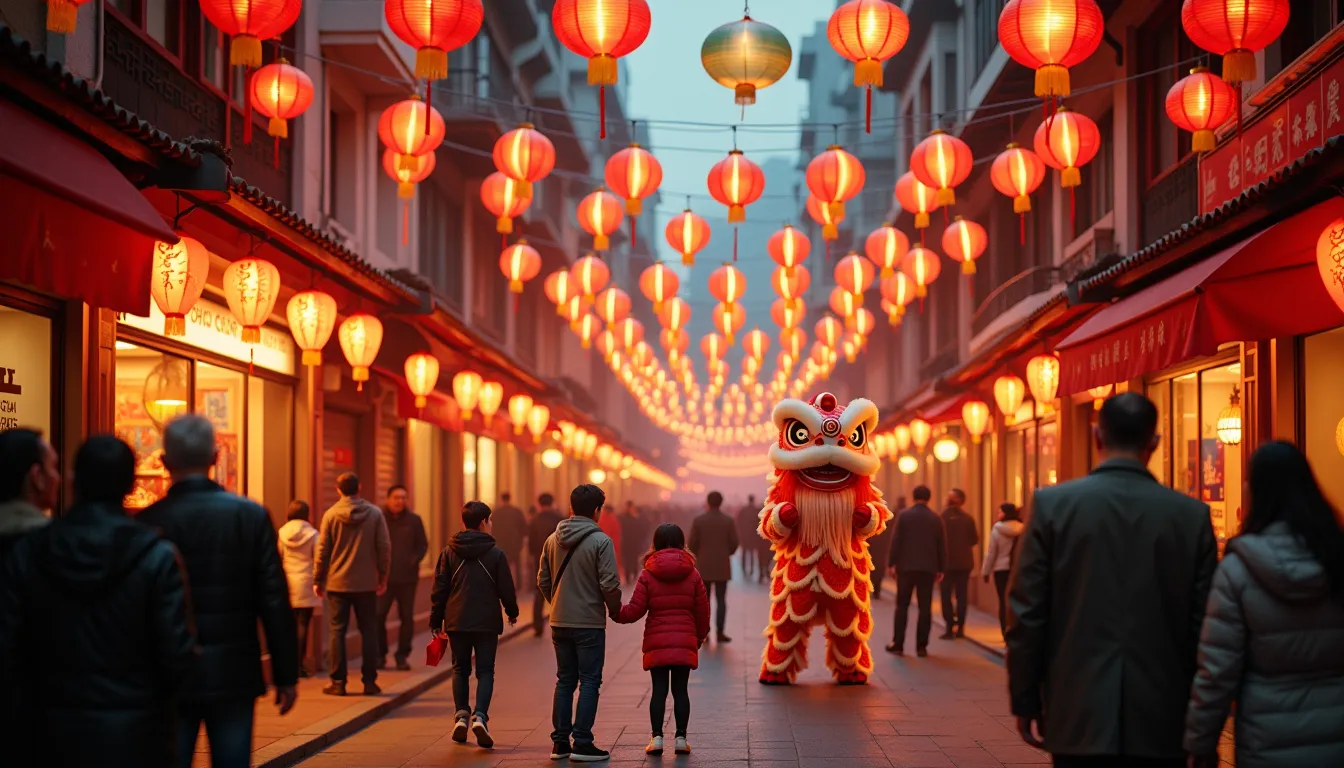As the sun sets on the bustling streets of Hong Kong, a sea of red lanterns illuminates the sky, marking the beginning of Chinese New Year. This vibrant celebration, steeped in over 3,000 years of history, offers travelers a unique window into the heart of Chinese culture. From the mouthwatering aromas of traditional dishes to the thunderous beats of lion dances, Chinese New Year is a feast for the senses that captivates visitors from around the globe.
The Legend of Nian: Where Tradition Meets Mythology
At the core of Chinese New Year lies the ancient tale of Nian, a fearsome beast that once terrorized villages. As local historian Li Wei recounts, “The story of Nian teaches us about resilience and community. It’s why we use red decorations and set off firecrackers – to ward off evil and welcome good fortune.” This legend not only explains the holiday’s vibrant customs but also offers travelers a deeper appreciation for the symbolism behind the celebrations.
Red Envelopes: More Than Just Lucky Money
The tradition of giving red envelopes, or “hong bao,” is more than just a monetary exchange. These crimson packets, filled with money, symbolize good wishes and prosperity for the coming year. As one local resident shares, “Giving red envelopes is our way of spreading joy and blessings. It’s a gesture that connects generations and strengthens family bonds.”
A Feast of Symbolism: Decoding Chinese New Year Cuisine
Chinese New Year’s Eve is marked by the reunion dinner, a sumptuous feast laden with symbolic dishes. Dumplings, shaped like ancient Chinese gold ingots, represent wealth, while whole fish symbolizes abundance. As Chef Wang from Beijing’s renowned Sichuan restaurant explains, “Each dish tells a story of hope and prosperity. For travelers, tasting these foods is like reading a delicious history book.”
Lion and Dragon Dances: A Spectacle of Color and Sound
No Chinese New Year celebration is complete without the mesmerizing lion and dragon dances. These dynamic performances, with their intricate costumes and thunderous drumbeats, are believed to bring good luck and ward off evil spirits. Travelers can witness these awe-inspiring displays in Chinatowns worldwide, from San Francisco to Singapore.
Beyond the Fireworks: Discovering Hidden Gems
While major cities offer grand celebrations, savvy travelers might seek out lesser-known destinations for a more authentic experience. The ancient water town of Zhouzhuang, for instance, offers a glimpse into traditional Chinese New Year customs amidst picturesque canals and centuries-old architecture. It’s reminiscent of the medieval charm found in certain European towns, but with a distinctly Chinese flavor.
The Lantern Festival: A Dazzling Finale
The Lantern Festival marks the end of Chinese New Year celebrations, lighting up the night sky with thousands of glowing lanterns. In the words of Zhang Mei, a cultural expert, “The Lantern Festival symbolizes unity and the bright future ahead. It’s a magical moment that stays with you long after you’ve returned home.”
Embracing Cultural Sensitivity: A Traveler’s Guide
For those planning to experience Chinese New Year firsthand, cultural sensitivity is key. Wearing red is considered auspicious, while gifting clocks is taboo as it symbolizes running out of time. These nuances, when respected, can greatly enhance a traveler’s experience and appreciation of the festivities.
A Journey Through Time and Tradition
Chinese New Year offers more than just spectacular celebrations; it’s a journey through time, tradition, and cultural heritage. Whether you’re savoring symbolic dishes in a bustling Chinatown or watching lanterns float into the night sky in a serene village, the experience promises to be as enriching as it is unforgettable.
As you plan your next adventure, consider immersing yourself in the vibrant tapestry of Chinese New Year. Like discovering hidden medieval fortresses or exploring forgotten villages, this cultural odyssey offers a unique perspective on history, community, and the enduring spirit of celebration. In the words of a wise Chinese proverb, “To understand a thousand years, read history; to understand a thousand miles, travel.” This New Year, why not do both?
